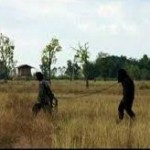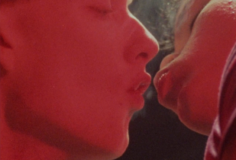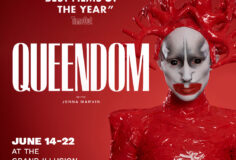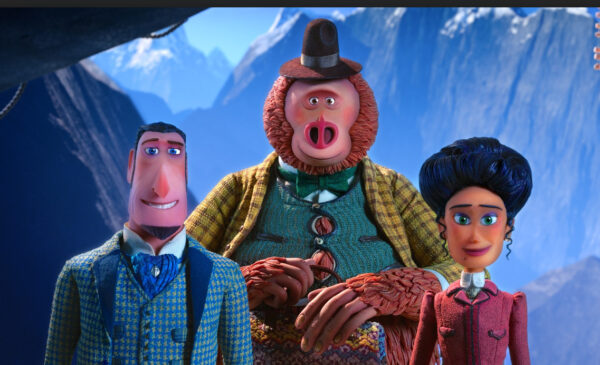Pride is fun and all, but what do you do if you don’t necessarily want to be surrounded by throngs of queers from the sticks drinking cheap beer out of plastic cups? You head to the movies, that’s what you do. Here is what’s playing in Seattle this week.
New Releases:
Bad Teacher, directed by Jake Kasdan (Walk Hard: the Dewey Cox Story), starring Cameron Diaz, Justin Timberlake, and Jason Segal. The premise of this week’s new R-rated comedy sounds delightfully weird–a self-centered junior high school teacher (Diaz) plots to seduce the school’s new substitute teacher (Timberlake) at the expense of her students and fellow teachers. This kind of mean-spirited comedy is unusual for a US release, and especially for a female lead, and even more especially for a role played by Cameron Diaz. The normally ditzy and lovable Diaz looks a bit miscast here. The role seems like it was written for Portia De Rossi’s Lindsay Bluth Fünke from Arrested Development or Julia Davis as Jill Tyrell in the hilarious Nighty Night from the BBC. Timberlake though looks decently cast as the affable straight man, a role where he may be able to avoid going into smarmy ham territory like he can in his more overtly comedic performances. And if both Diaz and Timberlake fail, at least there’s always the reliable Jason Segal to salvage what’s left of the film. (Now playing, wide release)
Still in Theaters:
Uncle Boonmee Who Can Recall His Past Lives, directed by Apichatpong Weerasethakul, starring Thanapat Saisaymar and Cave of Forgotten Dreams, directed by Werner Herzog. I mentioned Uncle Boonmee WCRHPL in last week’s column, and here’s a full review. In a nutshell: it’s a stunning poetic vision that should absolutely be seen, but I can’t promise that you will find it entertaining. At most I can argue that it’s worth the effort you put into unpacking the rich elements of elusive and obscure film.
There’s a heated debate in the film world right now about how to rate films that eschew conventional notions of entertainment (story and characters) in favor of visual poetry. As winner of the 2010 Palme d’Or at Cannes, Uncle Boonmee has gained attention in this debate as has the 2011 winner Tree of Life. Both are dreamy, poetic, slow-paced, and artful. Film goers looking for good stories have been vocal in their disapproval. As the title suggests, Uncle Boonmee (Saisaymar) nearing the end of his life receives a number of visitors from the spirit world, both recently passed loved-ones and distant ancestors. Weerasethakul intercuts into the film episodes from an older culture, scenes from fables and an ominous future vision. Are these the past lives from the title? Throughout the film there is constant fluidity between the human world and the spirit world, between humans and animals, between the past, present and future, and in a very concrete way between the modern city life of Boonmee’s relatives and the pastoral country life he has lived as a farmer and beekeeper. One of the very first scenes is Boonmee’s sister riding in the backseat of a car on her journey from the city to visit him. This method of transportation is a common-place act of transitioning from one place to another in a geographic plane that we are all familiar with, but elsewhere in the film characters transition between other planes: spanning time, in and out of the spirit world, and humans turning into animals and vice versa. There are no divisions between any of these states. Even natural elements, like trees and the wind are personified.
Some critics have described this as a Buddhist world view, but there is also a deeper universality in this world view, which brings me to drawing a connection with Werner Herzog’s Cave of Forgotten Dreams. In Herzog’s latest documentary, the rich culture of early hominids living in southern Europe (now France) during the Ice Age is painstakingly recreated by teams of anthropologists, paleontologists, ethno-musicologists, geologists, zoologists, and others. For example one team of scientists rebuilt a tiny flute made out of a deer’s collar bone out of 135 scattered bone shards. What the film suggests is that early man believed in a fluid culture, where humans, spirits and animals can freely transition from one state to another. This is evidenced by cave drawings and tiny sculptures of bear humans and other animal spirits. Another fascinating tidbit from the film is that there is no evidence that any humans lived in the cave; it had a purely spiritual and cultural function. In Uncle Boonmee, the three main (human) characters are led by the spirit of Boonmee’s wife into a hidden cave in the jungle. They follow a tiny path deep into the heart of the cave, where they lay down Boonmee’s body. In effect she has taken the characters deep into the cave of our ancestors in order to perform this ritual. None of the humans understand why this is being done, because modern culture has severed us from the rituals of the past, and it takes a spirit to reteach it to us.
The film also has a warning about the future, as foretold to Boonmee in a nightmare. In the dream, he visits the future, where future humans hunt down to destroy people from the past. If they find you, they will take your picture, which causes you to disappear. Here Weerasethakul gives us a surprising indictment of photography and filmmaking–the more we attempt to capture something in film the more we diminish the power of the original object or at least our ability to remember it. The final scene of the movie is the three city-dwelling characters of the film sitting mesmerized by the TV news. Television has entranced them, but has also quite literally in the film divorced them from their conscious selves–the characters walk around the room watching themselves watch TV. The scene does not judge the characters too harshly for their modern lives, but it heavily contrasts with the rich and beautiful scenes in Uncle Boonmee’s country home.
Why you should see this film–There really is entertainment to be found in this film’s poetic and haunting images, despite it’s slow pace and lack of clear story or message. It’s entertaining to try to unweave the elements and images of the film like unraveling a mystery. Weerasethakul masterly leaves a wide room for different interpretations of his film, but the images are so rich and arresting that I felt compelled to work to unpack them. (Uncle Boonmee Who Can Recall His Past Lives plays this weekend at Northwest Film Forum, Cave of Forgotten Dreams is playing in wide release)
Ryan Hicks is development manager for Three Dollar Bill Cinema, a film fan, and contributor to Seattle Gay Scene.


















